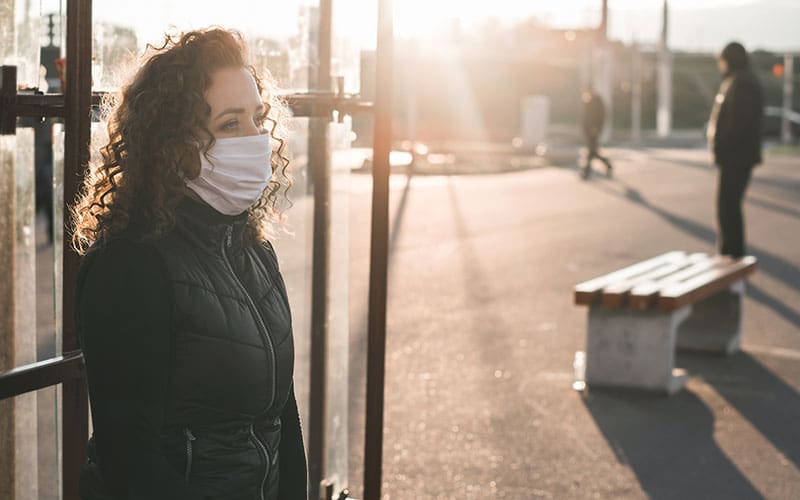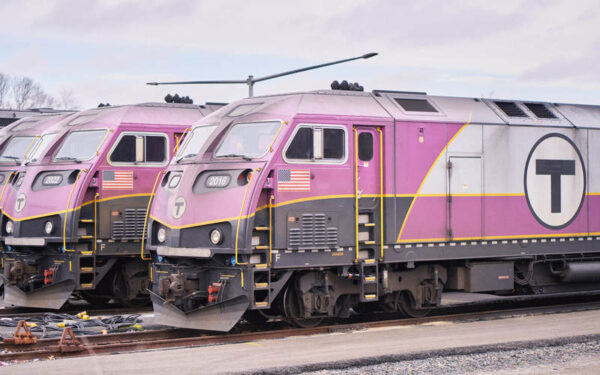
We can't ignore the systemic inequities exposed by the pandemic in the name of “getting back to normal.” Photo Credit: Shutterstock
Maybe it’s the hint of spring in the air, but I’m feeling hopeful for the future. We’re more than a year into the pandemic and I finally see the light at the end of the tunnel. Frontline workers and my most at-risk family and friends are getting vaccinated. Within a month, I should be vaccinated, too.
Part of my hope also springs from the Biden administration’s focus on environmental justice in its COVID-19 relief package – a first dose of his campaign promise to build back better. The $1.9 trillion stimulus relief bill included $100 million towards improving air quality and reducing environmental health risks in historically marginalized communities, $5 billion towards aiding Black farmers and ranchers, and $30.5 billion towards improving public transportation service. President Biden’s new infrastructure plan adds to this. It commits funds to clean energy buildouts that will reduce air pollution. It calls for affordable energy-efficiency upgrades that will improve people’s homes. And it promises investment in the education, childcare, and job training that will help us thrive.
But one-off injections of sorely needed cash aren’t enough to ensure every community in New England can recover and grow. Rather they’re band aids, temporarily slapped over a wound much bigger than a single stimulus or infrastructure bill can heal. To truly build back better, we must embrace the need for systemic change. The Biden administration, as well as state and local governments, must address why some communities are worse off than others and how they plan to fix these inequities.
We Need Different Systems, Not a Return to Normal
COVID-19 forced into the open the many inequities in our society that, for too long, were hiding in plain sight. We cannot simply unsee those inequities in the name of “getting back to normal.” The coronavirus crisis won’t be the last we endure, especially in the face of growing climate fallout that we can no longer avoid.
The effects of climate change – increased heat waves, more severe storms, worsening air quality – are converging with the racist systems that put Black, Brown, and low-income communities on the front lines of every major crisis. From historical redlining policies designed to segregate housing to deliberate decisions to build polluting power plants in low-income neighborhoods, systems at every level of government have created and entrenched inequities. The result: the same communities most ravaged by the pandemic are least prepared to weather the challenges of the climate crisis.
We can – and must – change this. Otherwise, we will leave our most vulnerable communities more exposed to the next crisis. To avoid devastating climate impacts and ensure a healthy, thriving future for every New Englander, we must proactively push for a justice-centered recovery from the pandemic and an equitable transition to a clean energy economy.
A Just Recovery Means Putting People First
Ensuring a just economic recovery from the pandemic means not following a business-as-usual model. Too often, those with the most money and privilege are able to recover from disaster while those with less cannot. Our economic system prioritizes profits over everything, with little regard for people’s wellbeing.
Recovering in a way that is just and equitable prioritizes people’s health, provides direct relief to families and individuals, and invests in the future of our communities. It doesn’t center normalcy as the goal. As we know, “normal” already wasn’t working for many people.
A just recovery should prioritize communities that deal with multiple burdens. The same neighborhoods disproportionately harmed by air pollution from power plants and highways also face heat risks from too much concrete and often lack access to public transit. These burdens are interconnected – but so are the solutions.
The beauty of a just recovery is that it can solve multiple challenges at once. It helps people recover in the near term while addressing systemic inequities and preparing our communities for the future.
How We Can Build Back Better in New England
A key piece of building back better is investing in historically marginalized communities. This ensures the next crisis doesn’t hit so hard. One way to do this is by creating local resilience hubs. These neighborhood-led facilities can provide food, shelter, and other resources during the next disaster. Investing in our communities not only fosters future resilience, but also helps people now by creating jobs and improving infrastructure.
Climate conscious policy – whether laws to lower emissions or other policy that takes climate change into account – can and should also be a way to direct investments in a just recovery. These policies can help correct some of the injustices frontline communities face today while addressing the underlying reasons these neighborhoods ended up on the front line in the first place – so long as the people hit first and worst are at the table developing the policies.
New England states like Massachusetts are already making progress. After years of work from CLF and our community partners, the Commonwealth passed a law that updates its climate mandates and codifies environmental justice. It puts a clear definition for environmental justice populations on the books, and includes ways for residents of these communities to influence industrial projects – like power plants or substations – that are too often proposed for their neighborhoods rather than nearby wealthier communities. It also establishes the need for a greater share of environmental benefits – like renewable energy and green spaces – to be available in these communities.
The Next Steps Towards a Just Recovery
Building back better looks different depending on where you live – those of us living in dense cities have different needs than those of us in rural towns, after all – but the principles are the same. We need to prioritize people’s wellbeing while investing in a resilient, equitable future.
As we wait to learn how the federal response to COVID-19 recovery plays out, CLF will continue this work here at home. We’ll be at the table with states and community partners creating strong climate policy and climate action plans, pushing them to incorporate environmental justice. We’ll be working alongside our partners to ensure that this work does not repeat or compound the harms of the past and instead moves toward redressing historic injustice. And we’ll be making sure our leaders are following through on their promises of a just recovery as they work to build back better.




